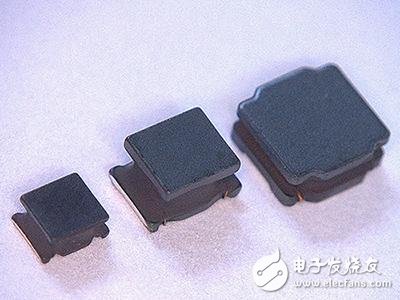
Privacy ထုတ်ပြန်ချက် - သင်၏ privacy သည်ကျွန်ုပ်တို့အတွက်အလွန်အရေးကြီးသည်။ သင်၏ကုမ္ပဏီ၏ကိုယ်ရေးကိုယ်တာအချက်အလက်များကိုသင်၏ရှင်းလင်းပြတ်သားသောခွင့်ပြုချက်များနှင့်အတူမည်သည့်ထုတ်ဖော်ပြောဆိုမှုကိုမထုတ်ဖော်ရန်ကတိပေးသည်။
+86-0510-86199063
Foreword
In recent years, with the continuous advancement of the electronic process of automobiles, various digital devices for vehicles, including audio and navigation systems, have been increasing. In addition, countries have stipulated the obligation to mount rear view cameras, lane departure warning systems, and automatic emergency braking systems, so that the demand for power inductors used in circuits for converting power supply voltages in these digital devices has increased significantly.
There are many types of power inductors. One of the most representative models is a copper wire wrapped with an insulating coating on the outside of the drum core, with a sleeve core around it, and the coating is a resin made of a mixed magnetic material. The other is a metal composite type in which an air core coil and a metal powder material are integrally formed. The terminal electrode is also classified into a plurality of types such as a metal frame terminal, a solder electrode, and a conductive adhesive.
On the other hand, electronic components for digital devices for vehicles are pursuing the requirements of miniaturization, high temperature resistance, and high reliability. Here we will introduce a wound inductor (up to the LQH**PB series of Figure 1) that can operate at temperatures up to 105 °C.

Figure 1: Power Inductor LQH**PB Series for Automotive Information Equipment (from left to right: 32PB, 43PB, 5BPB)
The above LQH series is used around the insulating coated copper wire wound around the drum core, and the magnetic resin used serves to reduce the leakage flux, protect the insulated coated copper wire, and improve the strength of the product. An overview of the structure is shown in Figure 2.

Figure 2: Introduction to the construction of the LQH series
Product characteristics
Improvement of thermal shock resistance (improvement of magnetic resin material)
Automotive electronic components are required to perform a thermal shock test with a minimum service temperature of 1000 cycles. Among them, the in-vehicle information device is subjected to a thermal shock test of 1000 cycles at a temperature of -40 ° C ⇔ + 105 ° C.
The coating material "magnetic resin" of the wound inductor contains epoxy resin, which realizes a large expansion and contraction of the glass transition point as a limit, and a thermal shock test at -40 ° C ⇔ + 105 ° C / 1000 rounds In the case, the magnetic resin also cracks. Further, a ferrite material is used for the drum core portion of the inductor, and the ferrite material and the magnetic resin have a difference in thermal expansion coefficient. If the difference in thermal expansion coefficient is large, the expansion and contraction of the magnetic resin causes stress to be transmitted to the drum core, causing cracks in the drum core.
January 16, 2024
ဒီကုန်ပစ္စည်းပေးသွင်းအီးမေးလ်
January 16, 2024

Privacy ထုတ်ပြန်ချက် - သင်၏ privacy သည်ကျွန်ုပ်တို့အတွက်အလွန်အရေးကြီးသည်။ သင်၏ကုမ္ပဏီ၏ကိုယ်ရေးကိုယ်တာအချက်အလက်များကိုသင်၏ရှင်းလင်းပြတ်သားသောခွင့်ပြုချက်များနှင့်အတူမည်သည့်ထုတ်ဖော်ပြောဆိုမှုကိုမထုတ်ဖော်ရန်ကတိပေးသည်။

ပိုမိုမြန်ဆန်စွာဆက်သွယ်နိုင်အောင်ပိုမိုသောအချက်အလက်များကိုဖြည့်ပါ
Privacy ထုတ်ပြန်ချက် - သင်၏ privacy သည်ကျွန်ုပ်တို့အတွက်အလွန်အရေးကြီးသည်။ သင်၏ကုမ္ပဏီ၏ကိုယ်ရေးကိုယ်တာအချက်အလက်များကိုသင်၏ရှင်းလင်းပြတ်သားသောခွင့်ပြုချက်များနှင့်အတူမည်သည့်ထုတ်ဖော်ပြောဆိုမှုကိုမထုတ်ဖော်ရန်ကတိပေးသည်။